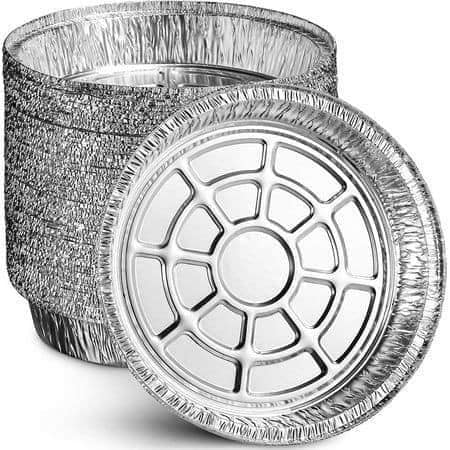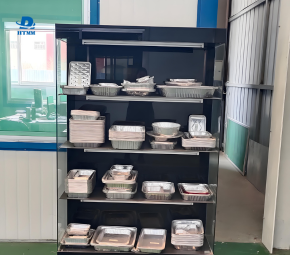 Lubricated Aluminum Foil For Container Making
Lubricated Aluminum Foil For Container Making
With the development of economy and technology, people pay more and more attention to food safety and the development of food packaging materials is also changing with each passing day. Aluminum foil, as a flexible and highly resource-recyclable safe and environmentally friendly material, will surely become the choice of green food packaging in the future. For example, the formed aluminum foil lunch box has been widely used in aviation food and large-scale event catering supply because of its convenience to carry.
The rapid development of the food industry puts forward higher requirements on the production process and industry standards. How to correctly choose lubricating products suitable for the production process of aluminum foil lunch boxes to ensure higher food safety and production efficiency is becoming a problem that many aluminum foil lunch box enterprises pay close attention to.
In the specific production process of aluminum foil lunch boxes, due to the high pressure and high temperature process. There are higher requirements for the stability and lubrication efficiency of the lubricant and a longer shelf life of the lubricant is required. As food containers, aluminum foil lunch boxes inevitably come into contact with food, which also puts forward higher requirements for the safety of lubricants.
The specific requirements for lubricants and lubrication methods are as follows: 1. Viscosity and load-bearing performance: the viscosity range of the lubricant required by the aluminum foil lunch box industry is 2-150mm/s. According to the type and size of the aluminum foil material lunch box, choose the appropriate one. Viscosity grade.
1. Viscosity and load-bearing performance: the viscosity range of the lubricant required by the aluminum foil lunch box industry is 2-150mm/s. According to the type and size of the aluminum foil material lunch box, choose the appropriate one. Viscosity grade.
2. Temperature resistance performance: because the production has to go through more than 40 tons of punching force and the frequency of medium pressure is relatively high. The surface of the equipment and the mold generates heat due to friction. If the heat is not released in time, the service life of the equipment and the mold will be greatly reduced. The maximum working temperature of equipment and molds is about 70°C, and the maximum heat-resistant temperature of lubricants should be higher than this temperature by more than 20°C. That is, the reasonable range of lubricant heat resistance is: -10℃~90℃.
How to choose raw materials for making food containers? First of all, we should clearly know what are the raw materials of disposable food containers? For example, our most commonly used aluminum foil specification is 3003 H24. The thickness and thickness of 3003 alloy are very suitable for making disposable food containers, and its freshness, moisture resistance, and safety are very good. When we use 3003 H24 to make disposable food containers, we can use them more conveniently.
First of all, we should clearly know what are the raw materials of disposable food containers? For example, our most commonly used aluminum foil specification is 3003 H24. The thickness and thickness of 3003 alloy are very suitable for making disposable food containers, and its freshness, moisture resistance, and safety are very good. When we use 3003 H24 to make disposable food containers, we can use them more conveniently.
The commonly used width range of 3003 H24 aluminum foil is 120mm-1100mm, and the commonly used thickness range is between 0.03mm-0.09mm.
If you want to engage in the business of making disposable food containers, you can clarify the specifications you want to choose based on the above data.
Smart manufacturers have their own processing plants and machines for making disposable food containers. They will choose to cooperate with Chinese aluminum foil manufacturers because they can purchase large-ton aluminum foil giant rolls at a very low price and then engage in Their production of disposable food containers allows them to gain more economic benefits.
So, if you are interested in the production of disposable food containers, but still have a lot you don’t understand, you can contact us and we can help you set up your new business. If you want to find a better aluminum foil manufacturer, You can also contact HTMM, because HTMM has more than 15 years of export experience, and the price of aluminum foil is very competitive, and it can also guarantee the most perfect quality. If you know a lot about the aluminum foil industry and aluminum foil disposable food containers, you can also learn more about HTMM, because HTMM is perfectly prepared to cooperate with you.





